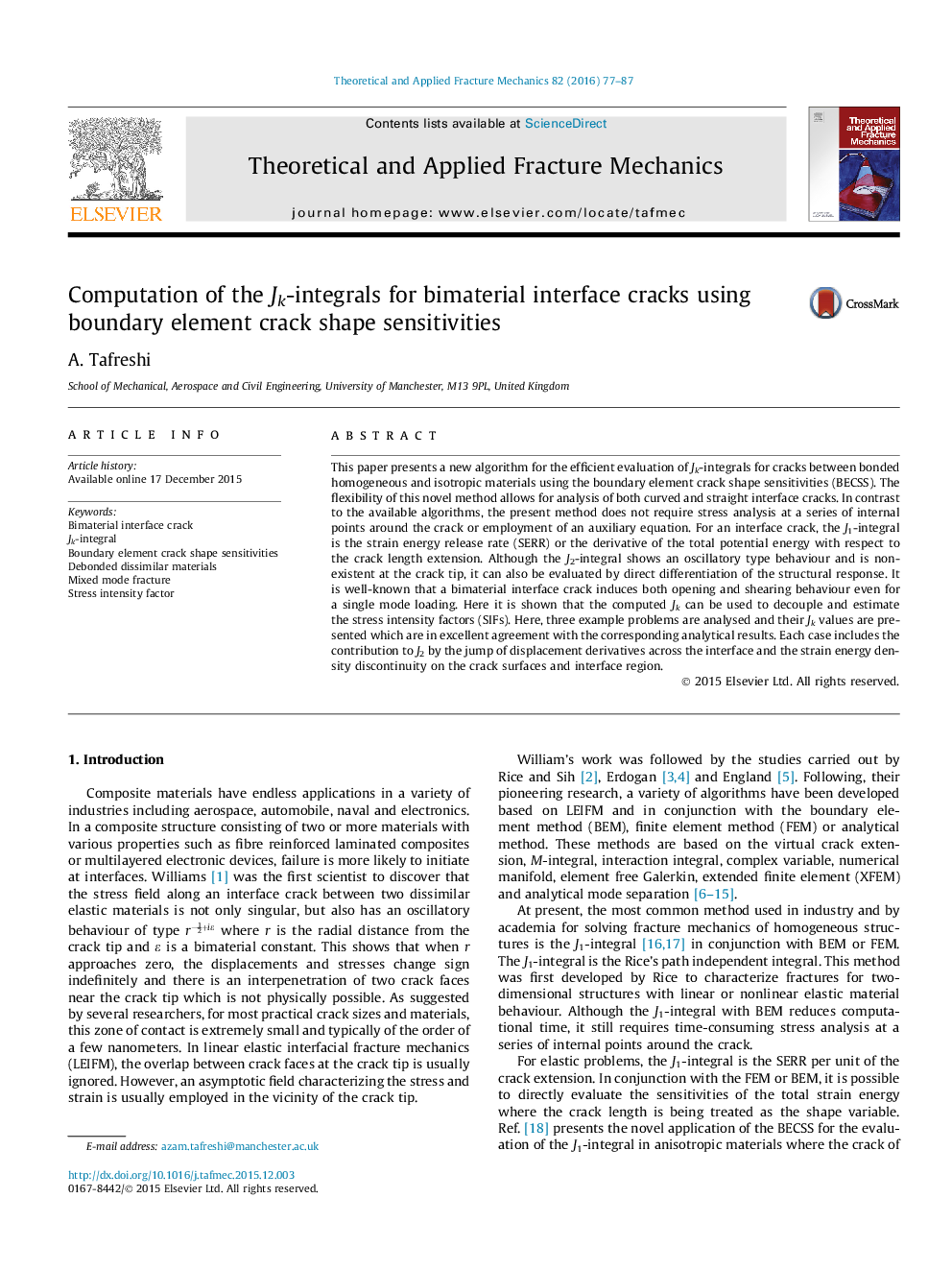| Article ID | Journal | Published Year | Pages | File Type |
|---|---|---|---|---|
| 807492 | Theoretical and Applied Fracture Mechanics | 2016 | 11 Pages |
•Jk-integrals for bimaterial interface cracks are computed using the boundary element crack shape sensitivities.•This method does not require stress analysis at a series of internal points or employment of an auxiliary equation.•The generality of the method allows for the analysis of both curved and straight interface cracks.
This paper presents a new algorithm for the efficient evaluation of Jk-integrals for cracks between bonded homogeneous and isotropic materials using the boundary element crack shape sensitivities (BECSS). The flexibility of this novel method allows for analysis of both curved and straight interface cracks. In contrast to the available algorithms, the present method does not require stress analysis at a series of internal points around the crack or employment of an auxiliary equation. For an interface crack, the J1-integral is the strain energy release rate (SERR) or the derivative of the total potential energy with respect to the crack length extension. Although the J2-integral shows an oscillatory type behaviour and is non-existent at the crack tip, it can also be evaluated by direct differentiation of the structural response. It is well-known that a bimaterial interface crack induces both opening and shearing behaviour even for a single mode loading. Here it is shown that the computed Jk can be used to decouple and estimate the stress intensity factors (SIFs). Here, three example problems are analysed and their Jk values are presented which are in excellent agreement with the corresponding analytical results. Each case includes the contribution to J2 by the jump of displacement derivatives across the interface and the strain energy density discontinuity on the crack surfaces and interface region.
